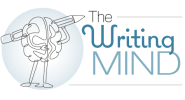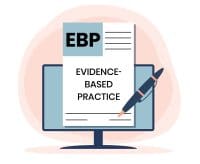Posters are an excellent way to disseminate your work, including research studies and quality improvement and evidence-based practice projects. Presenting a poster at a live or virtual local, regional, or national meeting helps you share information that can be used by your nursing colleagues to enhance their practice. In addition, posters can serve as a starting point for an article.
Like any writing effort, however, it’s important to plan and follow some key tips to ensure your poster stands out in the crowd.
Review guidelines
After your poster abstract is accepted, carefully review the conference’s guidelines, which will include size and how the poster will be displayed (for example, on a table, posted on a corkboard, and/or online). Size truly does matter. You’ll want to consider how text and visuals will fit in the allowed size so that the information can be easily absorbed.
Your organization may have internal resources for creating your poster, but if it doesn’t, don’t worry. Many online resources can help, and some are free to try. You also can turn to resources that outline how to create a poster in PowerPoint or InDesign from schools and hospitals, such as the University of Missouri (libraryguides.missouri.edu/powerpoint_posters) and UVA Health System (guides.hsl.virginia.edu/faq-poster-powerpoint). In addition, you can use Microsoft Word, Excel, or PowerPoint software. Excel is particularly useful for creating data charts.
Find out if your organization has any requirements for poster presentations. For example, the organization may have a logo or template slide for employees to use; the template slide may have colors that match the organization’s logo. More commonly, however, the conference’s organizing body has a template you can use.
Build your poster
Posters should be simple, easy to read, and contain graphics (for example, photos, graphs) to draw participants in. In a study of nurses (Siedlecki, 2015), esthetics—such as colors, font size, and layout symmetry—had the most influence on whether a conference participant would view a poster.
Sherman suggests that when creating a poster, it’s best to first make a rough layout on graph paper or with a computer software program to get an idea where to place the title, text, and any graphics, such as tables or illustrations. Create sections (usually columns) and decide on the headings for each.
Berg and Hicks suggest basing these headings based on the type of content. For example:
- Research: background and problem, purpose, sample, methods, results, conclusions, and implications
- Clinical: background/problem, purpose, summary of what is known, steps in developing the solution or strategy, outcomes, and implications
- Projects: background/problem, purpose, sample and setting, strategies, results, and implications.
However, you don’t need to cover each item as a separate heading because it might get too wordy. Instead, focus on the key points of what you did and your results. Give particular attention to the title, since that’s what participants will scan to decide if they want to read further. Succinctly state what the poster is about and use upper and lower case, rather than all capital letters, which is harder to read.
Edit your text to ensure it’s as concise and clear as possible. Most posters have too much text.
Follow the tips
Here are some other ways to make your poster stand out:
- Use bullet points instead of a lot of solid text.
- Keep a consistent font type throughout. Redulla notes that popular fonts include Times New Roman, Rockwell, Georgia, and Baskerville.
- Consider size. Recommendations vary, but Berg and Hicks suggest that the title be readable 15 to 20 feet away, with most of the text readable from 5 to 6 feet.
- Use cool colors (blue, green) rather than than warm (red, orange, yellow) ones. Remember that some attendees who are colorblind can’t distinguish between red and green so use caution when creating items such as pie charts with colors for each section of data.
- Consider adding a few images or icons to gain viewers’ attention and highlight key points. Check out online sources such as the Noun Project (thenounproject.com) and Vector Stock (vectorstock.com), but be sure to obtain permission if images have a copyright.
- Don’t over-pack your poster. Long and Beck recommend breaking the poster into 40% graphics, 30% text, and 30% white space, and Rossi and colleagues recommend that you keep the word count to about 150 to 250 words, with no more than two to three graphs. These are simply guidelines, the bottom line is that you don’t want to completely fill the poster with text and images, which will drive readers away, not toward, your poster.
- Include your contact information for those who would like more information. You also may want to create a QR code (qrcode-monkey.com) to make it easy for attendees to obtain a copy of your poster.
Test your poster out with colleagues so you can get feedback about clarity and readability. Redulla created a checklist that you also might find helpful.
Pack and present
When traveling with your poster, avoid checking it with your luggage. It’s better to hand carry on the plane. Allow plenty of time to set up your poster at the conference venue. Take extra pushpins and some tape in case provided supplies aren’t adequate. For eposters, follow submission guidelines.
For onsite conferences, you’ll likely be asked to stand at your poster at certain times to answer questions. Dress professionally and position yourself to the side so you don’t block your poster. Provide a few highlights of your work to those who stop to talk, but don’t immediately inundate them with excessive information. Instead, use open-ended questions to determine the level of detail they’re seeking. Remember to thank them for their interest.
For eposters and virtual conferences, you also may be asked to be available at a set time to answer questions. The same basic rules apply—dress professionally, tailor information to the individual, and end with a thank you. In some cases, you may be asked to provide a short audio clip that describes your poster.
Opportunities…
Posters provide an excellent way not only to build your professional network, but also to begin writing for publication. After you write your poster, you’ll be ready to write a manuscript based on the poster.
References
Berg J, Hicks R. Successful design and delivery of a professional poster. J Am Assoc Nurse Pract. 2017;29(8):461-9. doi:10.1002/2327-6924.12478
Long TL, Beck CT. Writing in Nursing: A Brief Guide. Oxford, UK: Oxford University Press; 2017.
Redulla R. Creating a compelling poster. Am Nurse J. 2021;16(6):14-17.
Rossi T, Slattery F, Richter K. The evolution of the scientific poster: From eye-sore to eye-catcher. Medical Writing. 2020;29(1):36-41. journal.emwa.org/visual-communications/the-evolution-of-the-scientific-poster-from-eye-sore-to-eye-catcher/
Sherman RO. Writing for presentations. In: Saver C, ed. Anatomy of Writing for Publication for Nurses. 4th ed. Indianapolis, IN: Sigma Theta Tau International; 2021; 215-26.
Siedlecki SL. Exploration of poster characteristics and their influence of knowledge transfer [Poster presentation]. Sigma Theta Tau International 26th International Nursing Research Congress, San Juan, Puerto Rico. July 23-27, 2015. sigma.nursingrepository.org/handle/10755/601610


Whether you’re considering your first or your 50th publication, want to contribute to your organization’s newsletter, or crave to be a better communicator online and in print, I hope you’ll find what I write helpful. The nurse publishing colleagues I’ve learned from over the years (many of whom are contributors to my book) may not be listed by name, but I’m grateful for their willingness to share. In that spirit, I’m looking forward to sharing with you! If you have feedback, feel free to email me at csaver@healthcommedia.com.



















